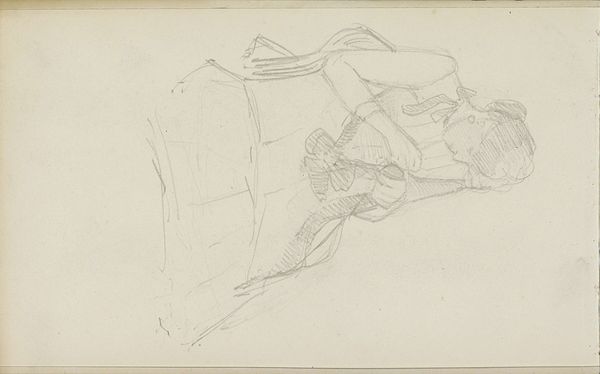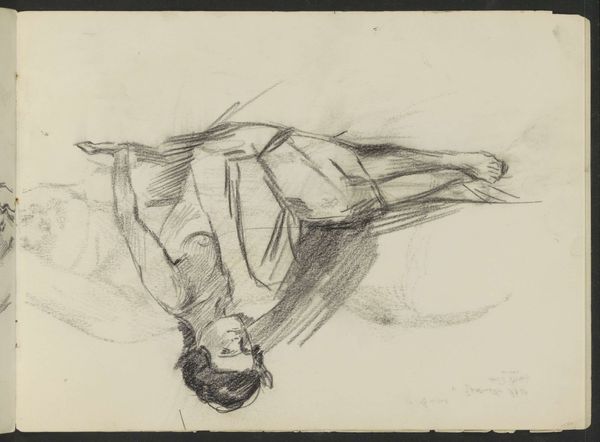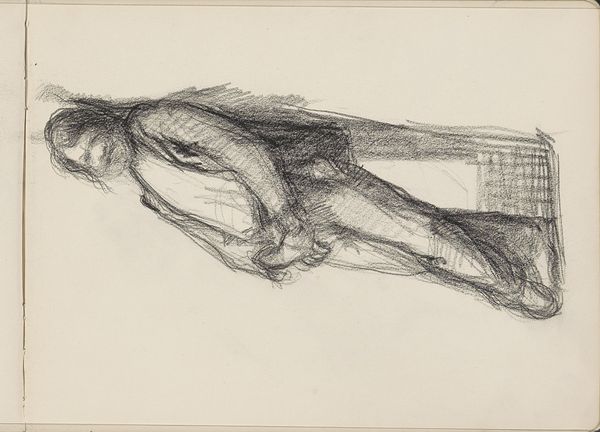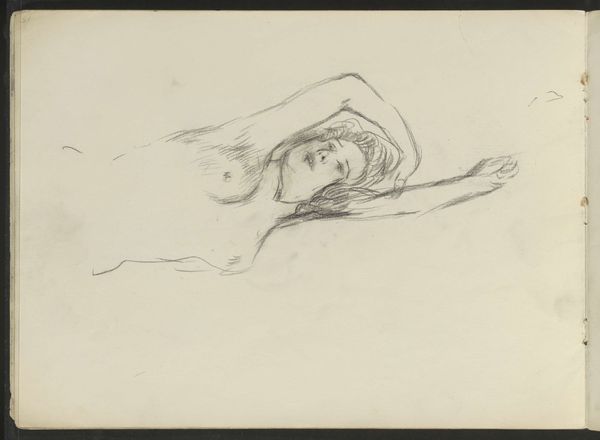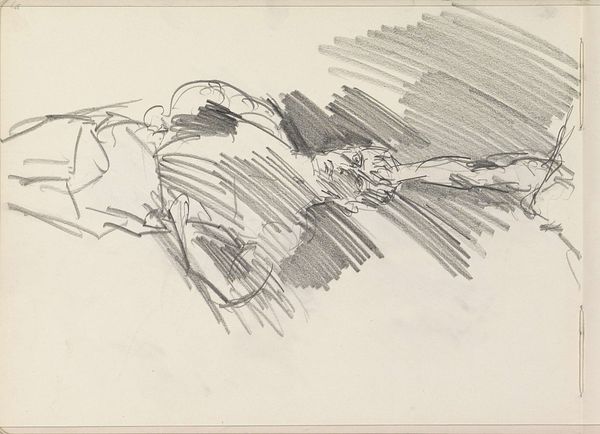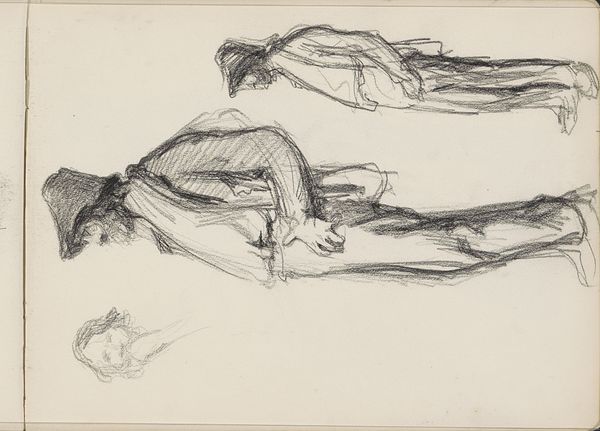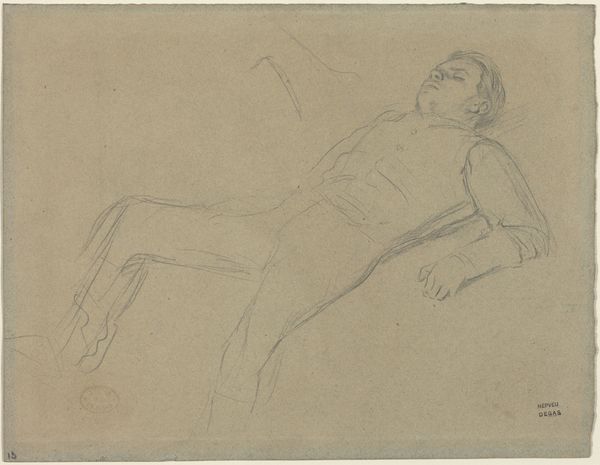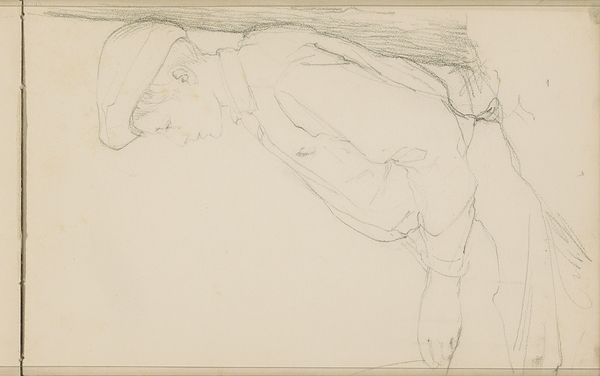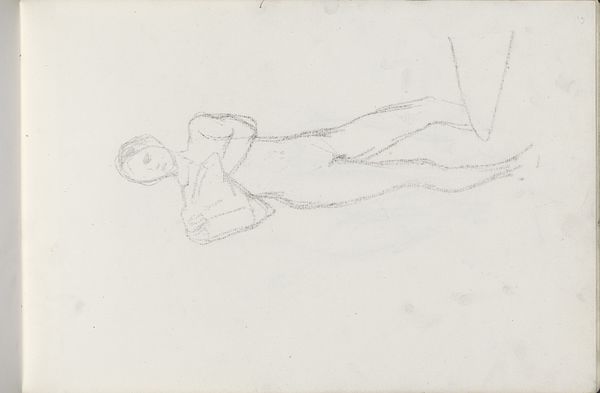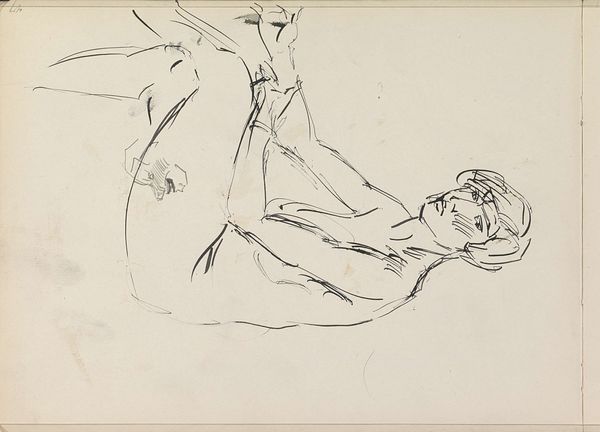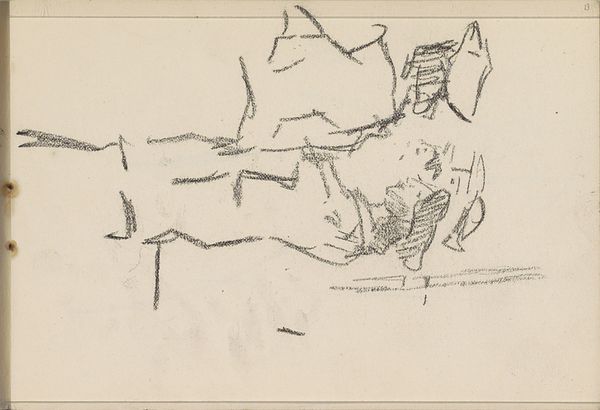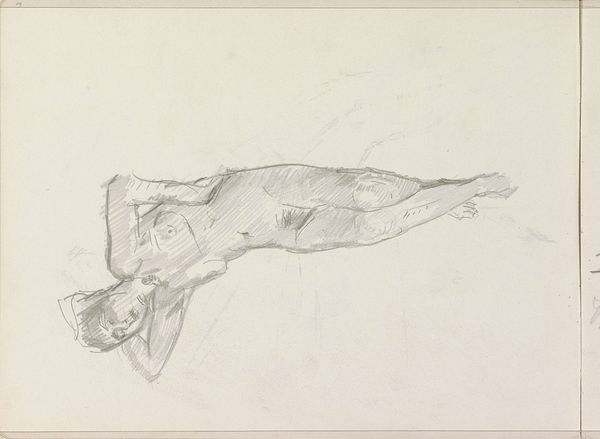
drawing, pencil
#
portrait
#
drawing
#
figuration
#
pencil
#
realism
Copyright: Rijks Museum: Open Domain
Curator: What a beautifully melancholic piece. Editor: It really evokes a sense of quiet contemplation, doesn't it? Looking at "Zittende man, het hoofd rustend op de linkerhand," a drawing housed here at the Rijksmuseum, you can feel the weight of the subject’s thoughts. Bramine Hubrecht made it sometime between 1865 and 1913 using pencil on paper. What is striking for you? Curator: It's the simplicity, truly. Just pencil and paper. You have this everyday material used to create something that suggests a deep internal state. Think about where that paper came from, the mill perhaps, the labor of creating both paper and image – so much process involved to depict this intimate moment. There's a second sketch above of a building—was this a mass produced sketchbook, part of a pedagogical approach, a practice of learning to draw? Editor: It makes me wonder about the social conditions influencing the sitter and, perhaps indirectly, the artist as well. What kinds of emotional landscapes are considered acceptable or desirable subjects for art? Were these kinds of more intimate, emotionally vulnerable depictions intended for public display at that time? This is also what the presence of the architectural sketch up top makes me wonder about - what world did they inhabit? What expectations about gender and class did Hubrecht contend with as an artist during this period? Curator: Right, it begs the question of accessibility, too. Pencil and paper make artmaking easier to do than painting or sculpture, but who had access to even these basic tools and the leisure time to use them? Is this more directly a study of the working class, sketched by a society woman, than a high minded work of commissioned art, born of luxury? Editor: The museum plays a role in shaping how we understand its value, of course. The context of the Rijksmuseum gives this piece prestige, influencing its reception and placing it in a lineage of "fine art," even if it began as a sketch, something almost furtive in its production, like overhearing someone's thoughts. Curator: And it encourages a particular type of consumption. We gaze at it, analyze it, extract meaning, and ultimately consume it intellectually within this specific institutional setting. Even now, through headphones and this guide. The original intention is lost, the hand crafting it becomes obscured by layers of social significance. Editor: Which underscores, in the end, the ever-evolving story of a work of art—how it reflects both its time and the times that come after. Curator: A point beautifully underscored. The transformation of raw material into resonant, reflective imagery—that's the magic we continue to explore.
Comments
No comments
Be the first to comment and join the conversation on the ultimate creative platform.
